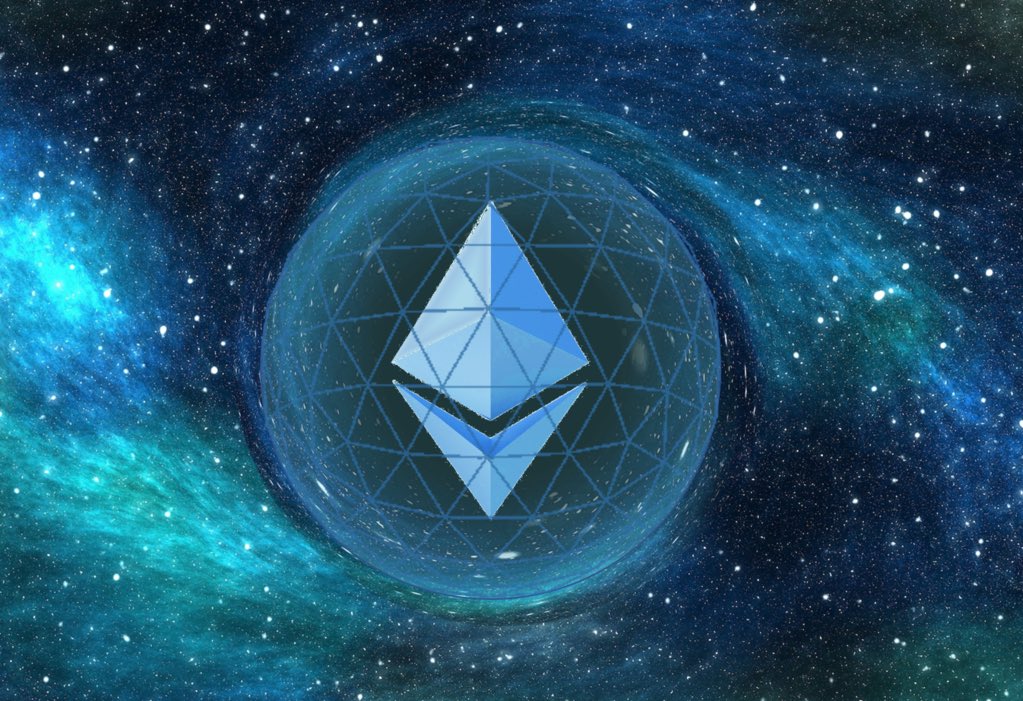
ETH 2.0 is finally here and will transform Ethereum as we know it.
But what is the philosophy underpinning ETH 2.0? And what is Ethereum building towards?
It all starts with the idea that Ethereum is the foundation of a social contract for the global economy.
1/
But what is the philosophy underpinning ETH 2.0? And what is Ethereum building towards?
It all starts with the idea that Ethereum is the foundation of a social contract for the global economy.
1/

Ethereum is a global public good that is open, borderless, neutral, transparent, and censorship-resistant.
Ethereum provides a system of property rights, rules, and economic opportunity for anyone in the world with an internet connection.
Ethereum provides a system of property rights, rules, and economic opportunity for anyone in the world with an internet connection.

With Ethereum users and builders are sovereign and able to determine their own economic destinies.
This is important in an age of declining trust in institutions where many people don’t have access to stable systems of property rights or economic opportunity.
This is important in an age of declining trust in institutions where many people don’t have access to stable systems of property rights or economic opportunity.
With this in mind ETH 2.0 was designed with five key principles:
- Simplicity
- Long-term stability
- Sufficiency
- Defense in depth
- Full light-client verifiability
notes.ethereum.org/@vbuterin/rkhC…
- Simplicity
- Long-term stability
- Sufficiency
- Defense in depth
- Full light-client verifiability
notes.ethereum.org/@vbuterin/rkhC…
Simplicity - Allows ETH 2.0 to minimize development costs, reduce its attack surface, and clearly convince users that protocol parameter choices are legitimate because they’re easier to understand (key for credible neutrality).
Long-Term Stability - Although Ethereum so far has favored evolution over stability, ETH 2.0 is designed with the idea that once built, there should be little need to change it for long periods of time - a necessity for Ethereum to serve as public infrastructure.
Sufficiency - Blockchains must be powerful enough for it to be possible to build trust minimized layer2 protocols on top of it.
In order to achieve this blockchains must include an expressive programming language, scalable data availability and computation, and fast block times.
In order to achieve this blockchains must include an expressive programming language, scalable data availability and computation, and fast block times.
https://twitter.com/vitalikbuterin/status/1331428783635656704
Defense in Depth - Blockchains must work well under a variety of possible security assumptions.
A key way to achieve this is to design the system so that it is as decentralized as possible to prevent faults, collusions, and attacks.
A key way to achieve this is to design the system so that it is as decentralized as possible to prevent faults, collusions, and attacks.

And in the case where harmful collusion does take place, it’s important to make it extremely expensive for those colluding and easy for non-colluding participants to recover the system.
These are the core reasons underlying Ethereum’s shift to Proof of Stake.
These are the core reasons underlying Ethereum’s shift to Proof of Stake.
Full Light-Client Verifiability - Many users will only interact with Ethereum through light clients.
Thus it’s important for those users to be able to verify that the data in the full system is available and valid, even under a 51% attack (under certain assumptions).
Thus it’s important for those users to be able to verify that the data in the full system is available and valid, even under a 51% attack (under certain assumptions).
The purpose of all the above principles is to increase Ethereum’s scalability, security, and energy efficiency without compromising on accessibility or decentralization.
ETH 2.0 was built to provide the bedrock for the next evolution of the cryptoeconomy.
One where Ethereum’s burgeoning ecosystem of composable and symbiotic decentralized finance protocols as well as many more applications can flourish.
bit.ly/36o2S2Y
One where Ethereum’s burgeoning ecosystem of composable and symbiotic decentralized finance protocols as well as many more applications can flourish.
bit.ly/36o2S2Y
Excited to share @WilsonWithiam and I’s full ETH 2.0 report tomorrow.
We did our best to cover everything you’d want to know about ETH 2.0.
We did our best to cover everything you’d want to know about ETH 2.0.

• • •
Missing some Tweet in this thread? You can try to
force a refresh






